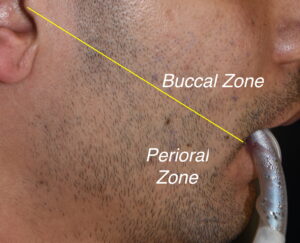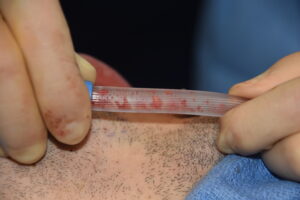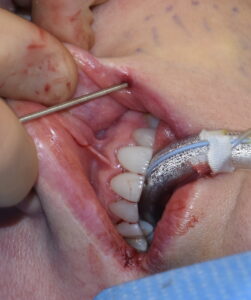There are numerous fat compartments on the face that can be surgically reduced. The most recognized and easily removed is the buccal fat pads. (aka buccal lipectomy) Located just under the cheekbones, it is a very discrete collection of fat that has its own pedicled blood supply and a surrounding capsule. It is removed from an intraoral approach through a small incision just opposite the molar teeth.

Below this drawn line sits another smaller collection of facial fat known as the perioral fat or, when bulging, the perioral mounds. This is a subcutaneous non-encapsulated fat collection that sits between the skin and the buccinator muscle. It is located at the southern end of the cheeks or its lower half. It has no anatomic connection to the buccal fat pad. In rare cases the buccal fat pad has been known to fall or prolapse into the perioral mound area.

Dr. Barry Eppley
Indianapolis, Indiana



